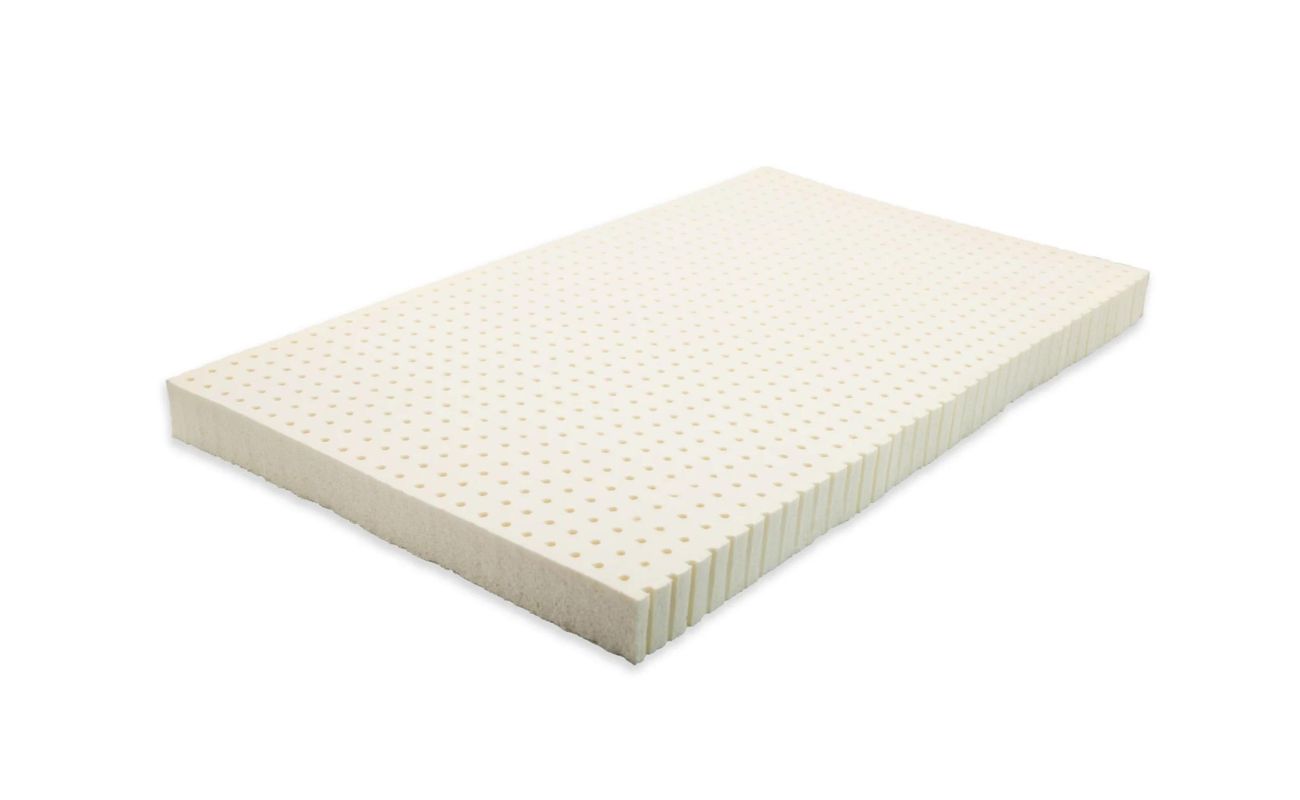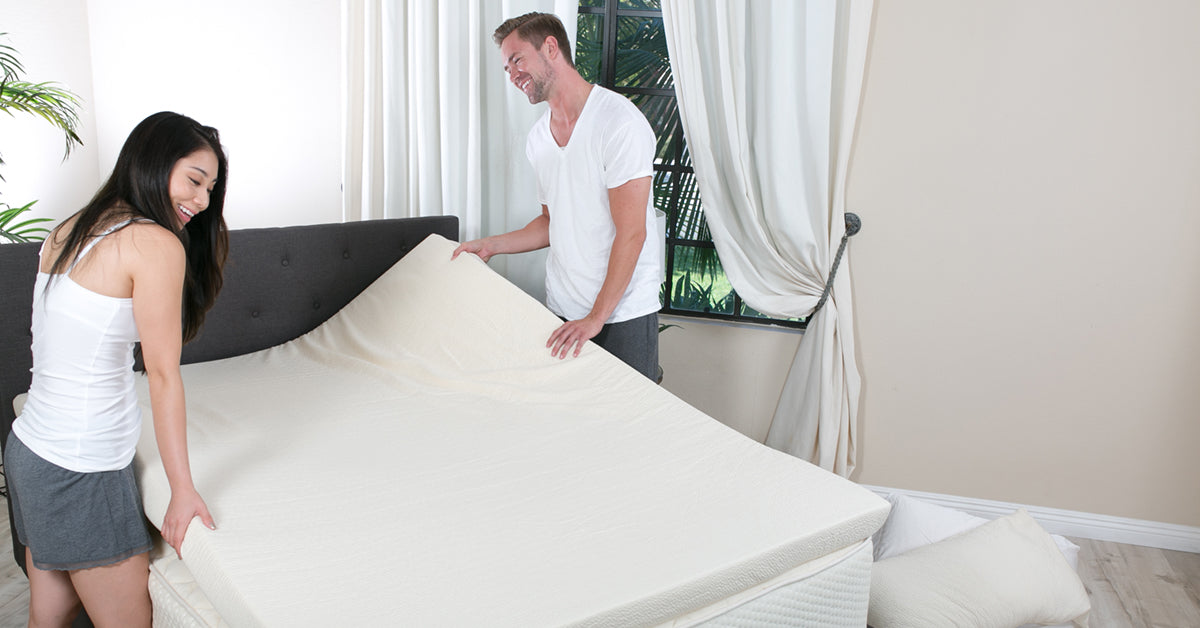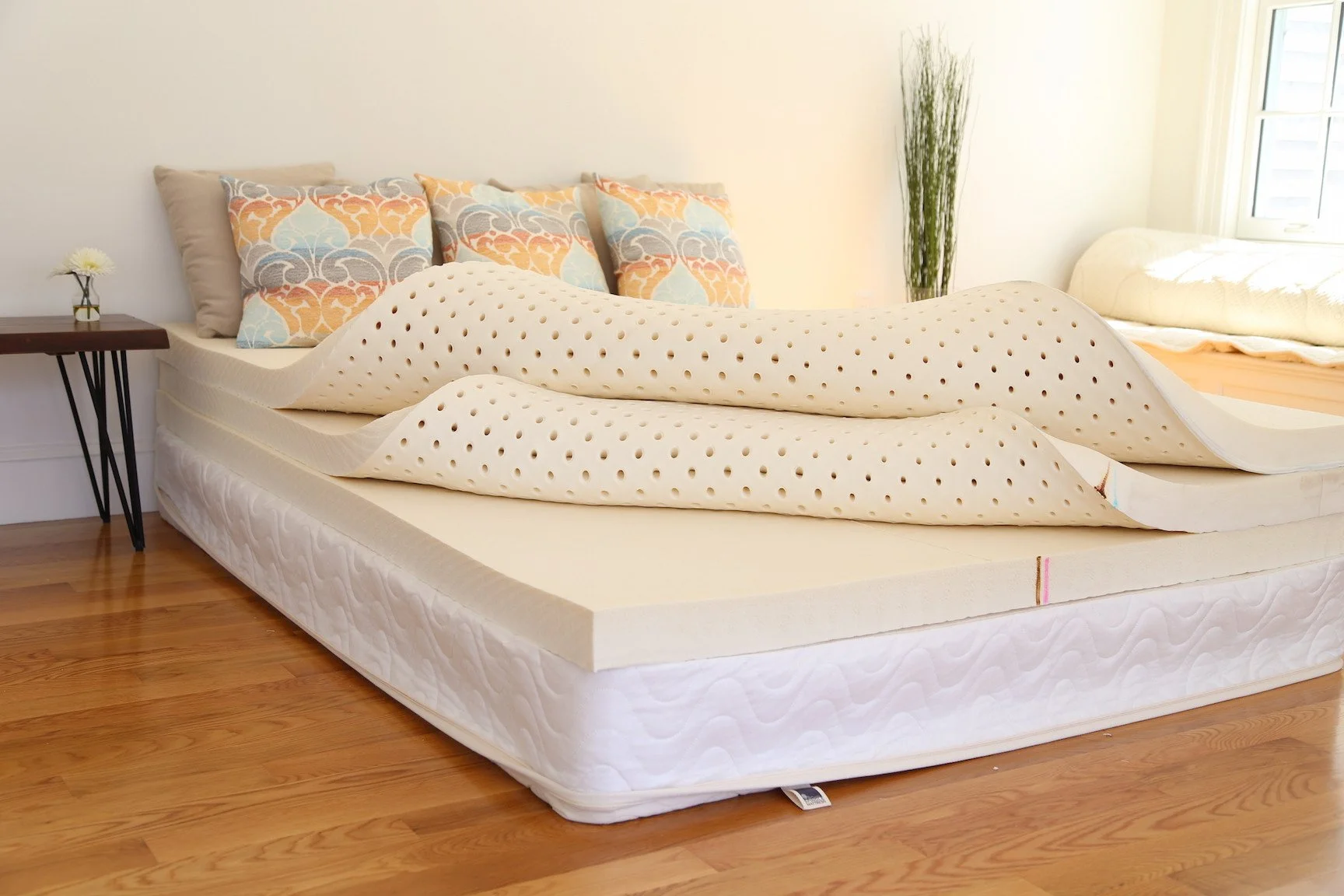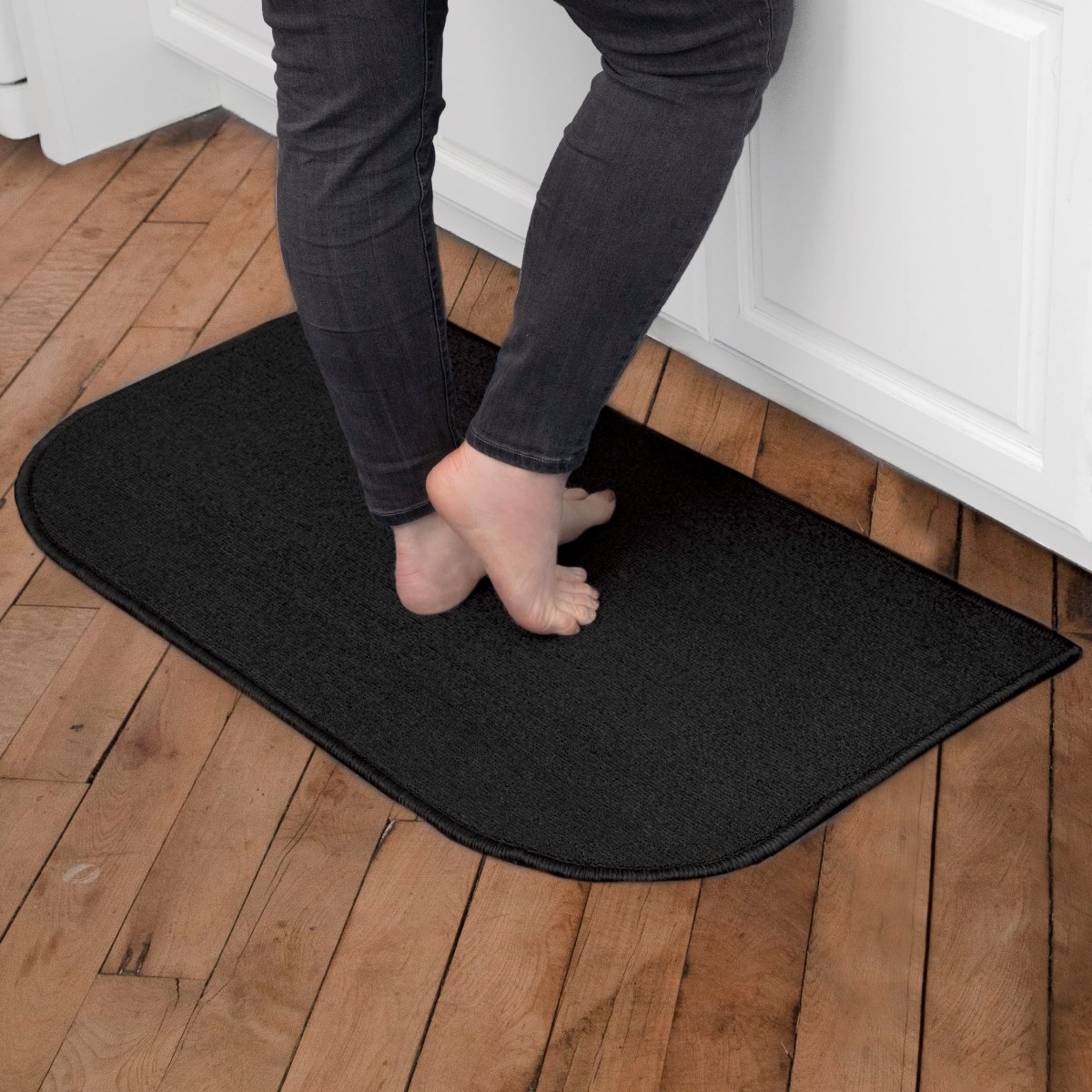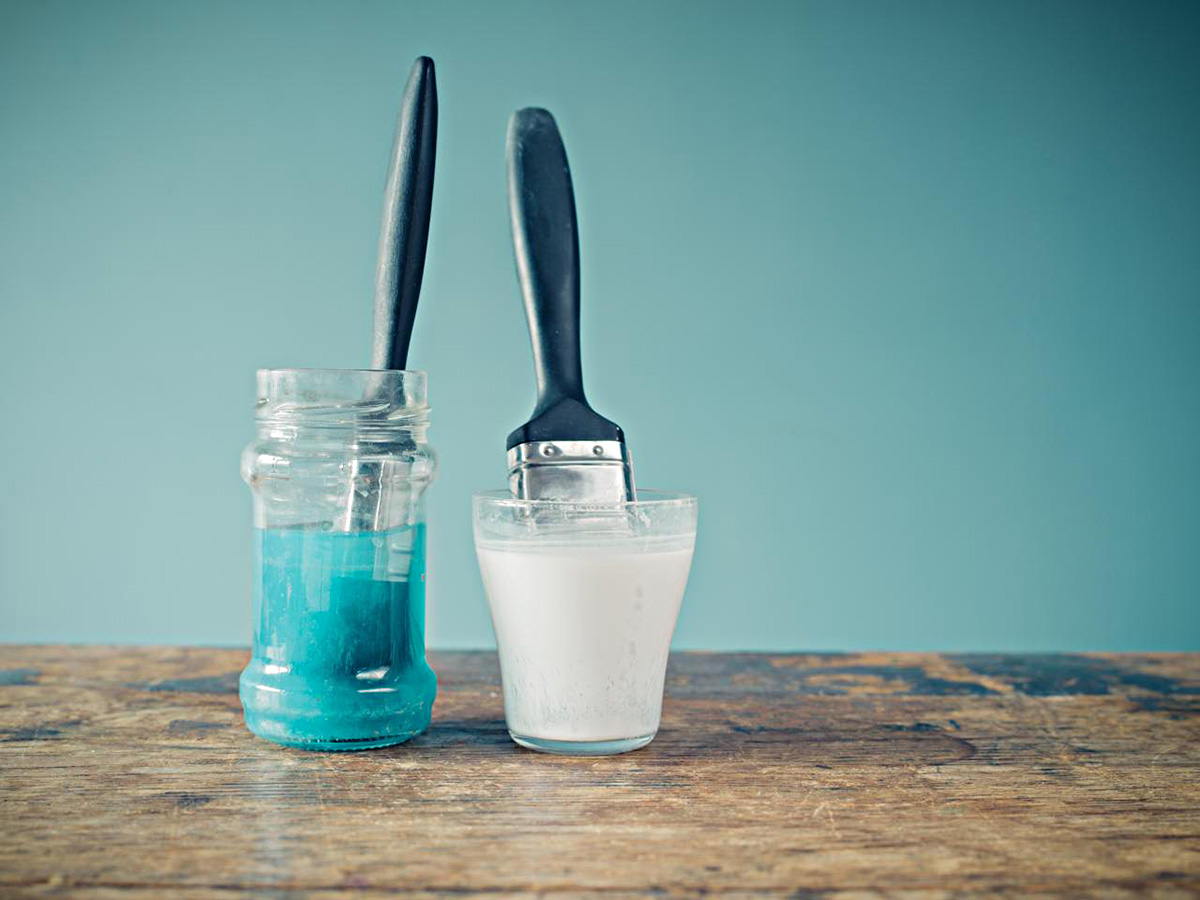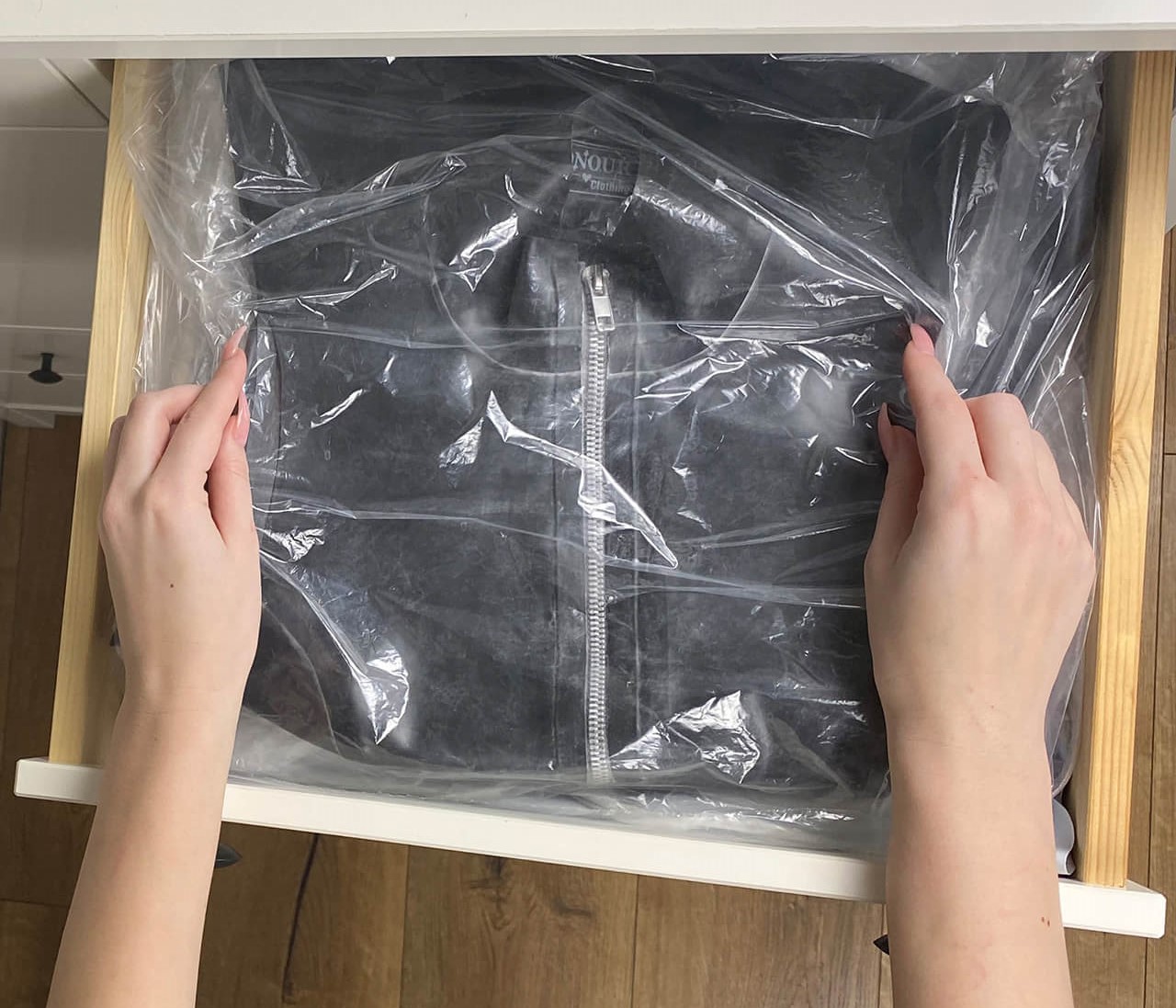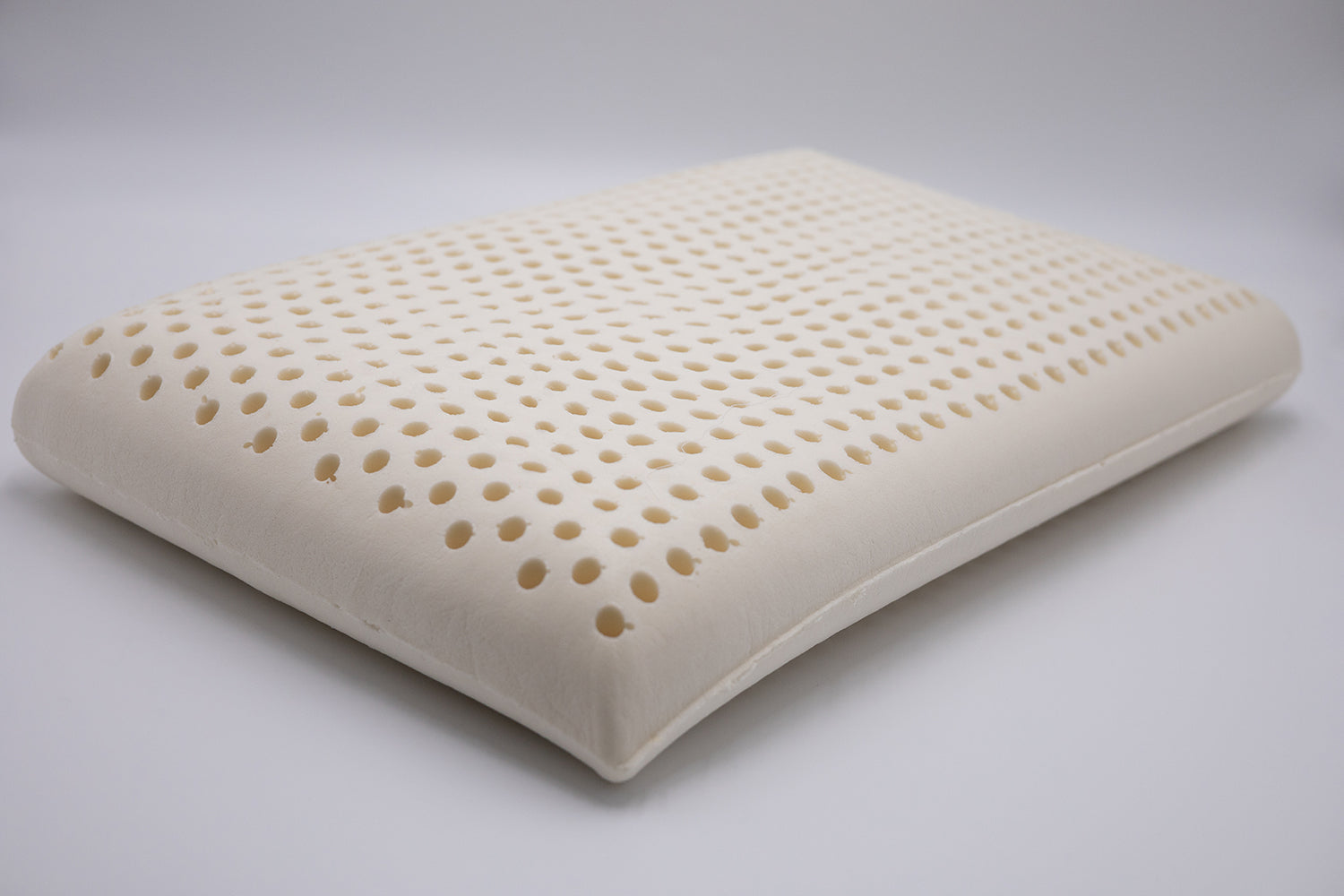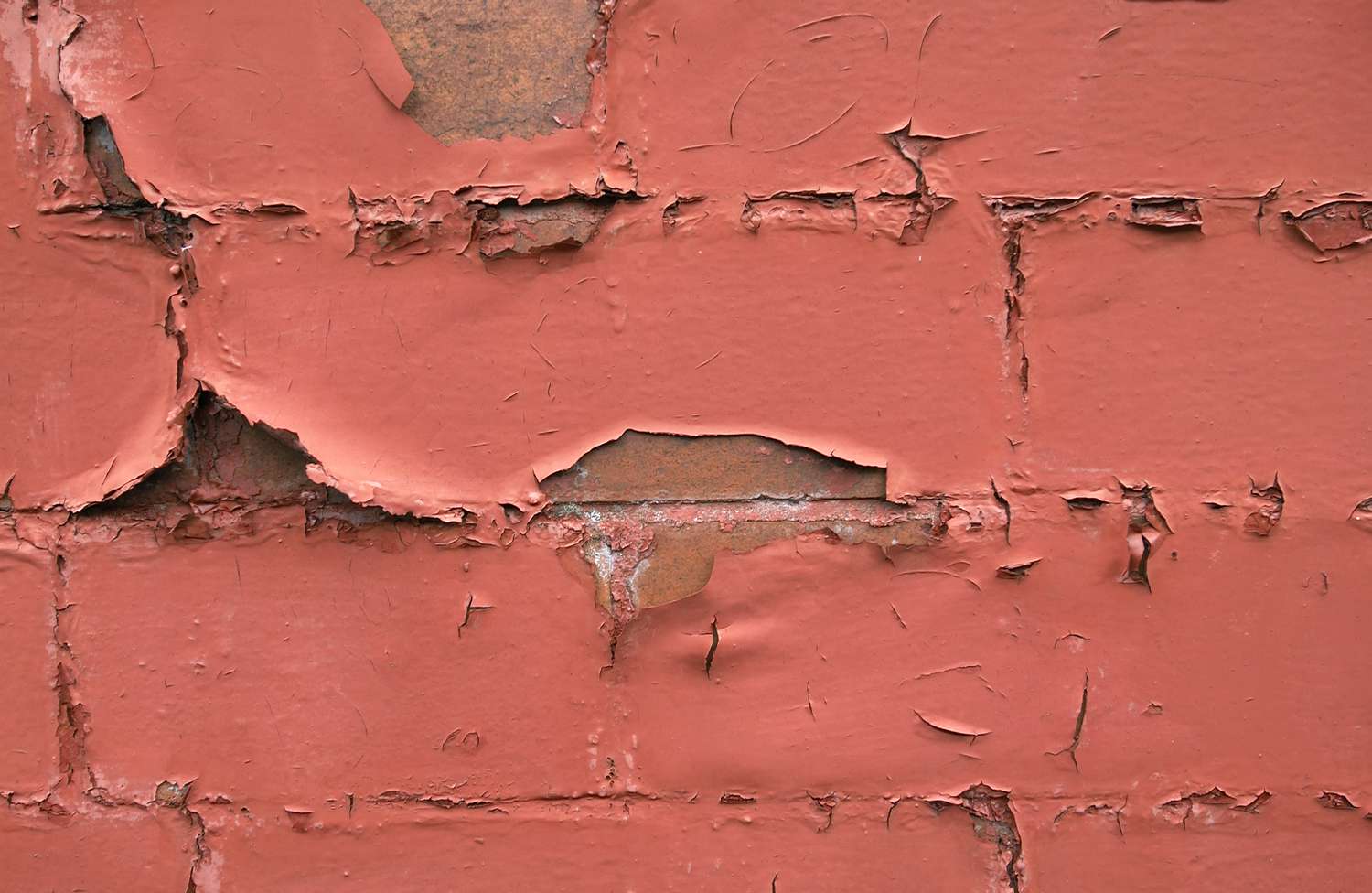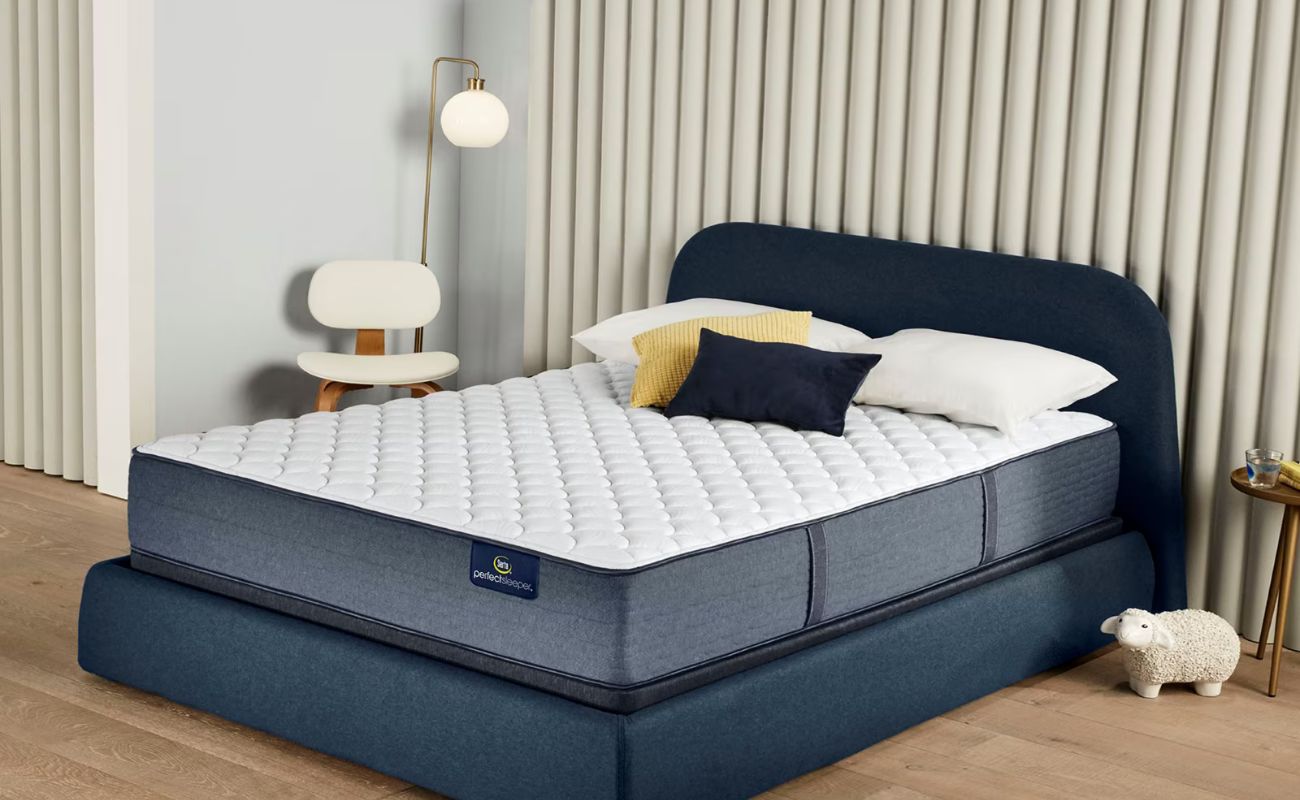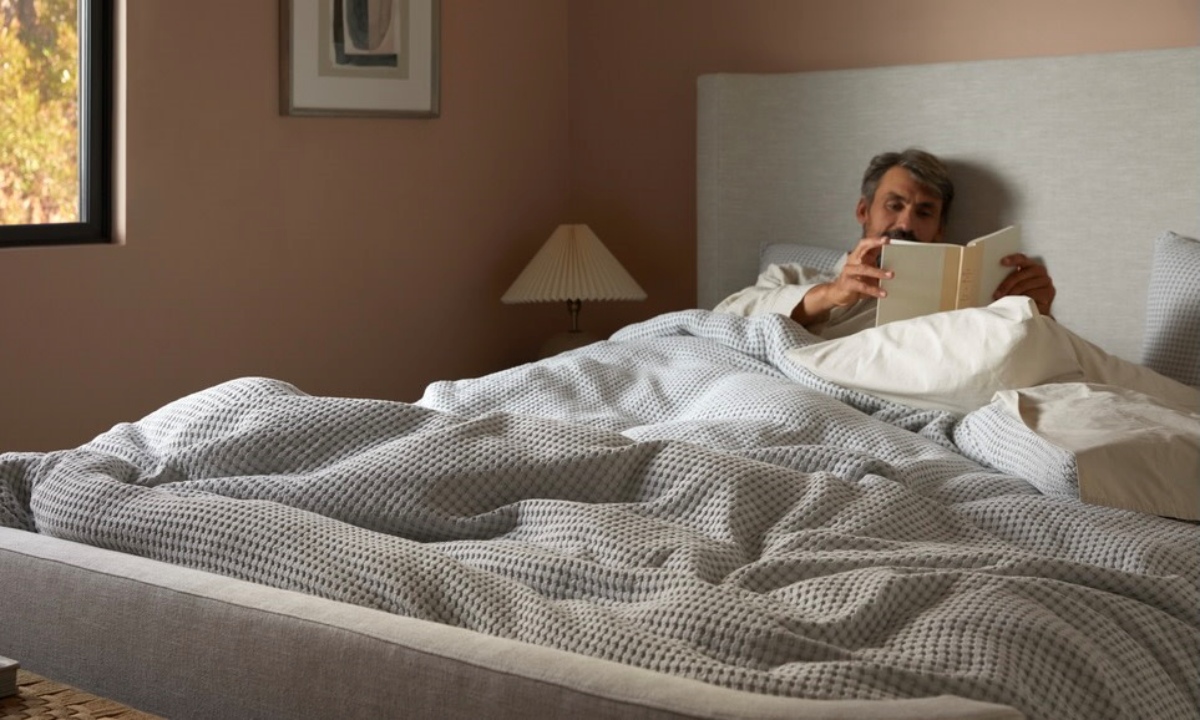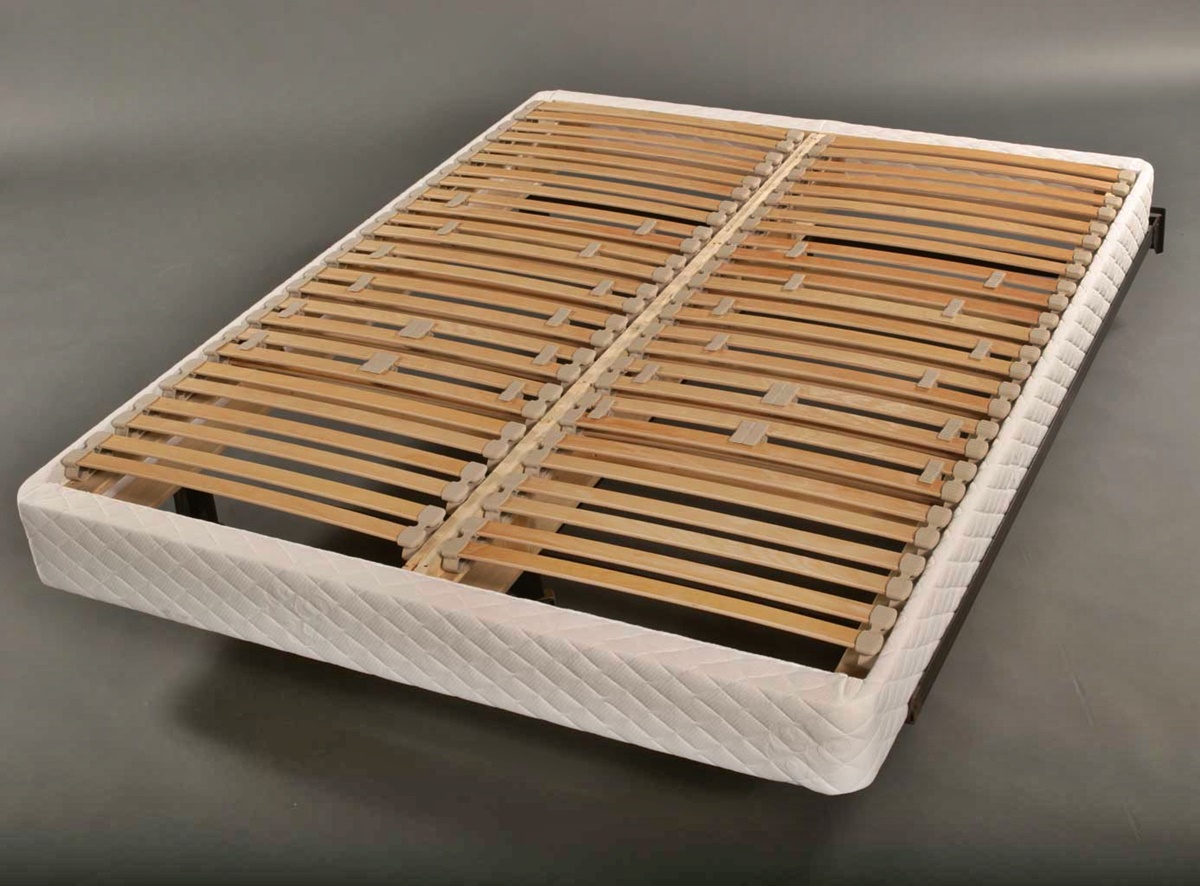Home>Furniture>Bedroom Furniture>What Is A Latex Mattress
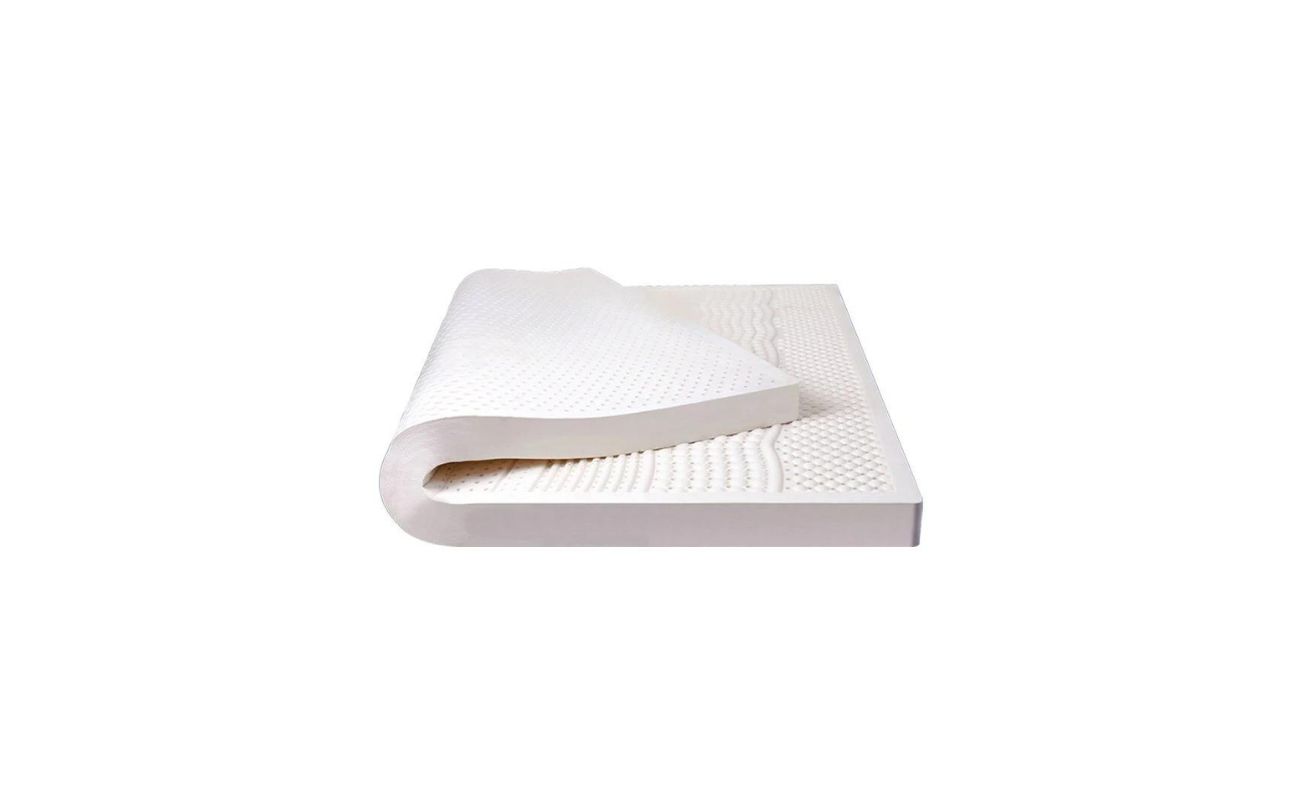

Bedroom Furniture
What Is A Latex Mattress
Modified: January 9, 2024
Discover the benefits of a latex mattress for your bedroom furniture. Find out how this natural and durable bedding option can enhance your sleep and comfort.
(Many of the links in this article redirect to a specific reviewed product. Your purchase of these products through affiliate links helps to generate commission for Storables.com, at no extra cost. Learn more)
Introduction
Welcome to the world of latex mattresses! If you’re in search of a comfortable and supportive bed that can improve your sleep quality, you’re in the right place. In this article, we’ll explore the wonderful world of latex mattresses, their benefits, types, manufacturing process, and everything you need to know to make an informed decision when purchasing one.
Latex mattresses have gained popularity in recent years due to their unique combination of comfort and durability. Made from the sap of rubber trees, latex is a natural and eco-friendly material that offers numerous advantages over traditional mattresses.
With its ability to contour to your body shape, latex provides exceptional support to alleviate pressure points and promote proper spinal alignment. Whether you’re a side sleeper, back sleeper, or stomach sleeper, a latex mattress can adapt to your sleeping style, delivering a personalized level of comfort.
In addition to its remarkable comfort, latex is also hypoallergenic and resistant to dust mites, mold, and mildew. This makes it an excellent choice for individuals with allergies or asthma, as it helps create a cleaner and healthier sleeping environment.
Furthermore, latex mattresses are known for their exceptional durability. With proper care, a high-quality latex mattress can last for many years, maintaining its shape and supportiveness. This longevity makes it a cost-effective investment in your sleep health and overall well-being.
So, whether you’re seeking relief from back pain, searching for a more natural and eco-friendly mattress option, or simply desiring a great night’s sleep, a latex mattress might be the perfect solution for you.
Now that we’ve covered the basics, let’s dive deeper into the world of latex mattresses to discover the various types available and the benefits they offer.
Key Takeaways:
- Latex mattresses offer exceptional comfort, durability, and hypoallergenic properties, making them a popular choice for those seeking a healthier and more restful sleep environment. With various types available, including natural, synthetic, and blended latex, there’s a suitable option for every sleeper.
- When choosing a latex mattress, consider factors such as firmness level, latex type, certifications, and your specific sleeping preferences. Take advantage of trial periods and customer reviews to ensure you find the perfect fit. Proper maintenance and care can prolong the lifespan of your latex mattress, providing years of comfortable and rejuvenating sleep.
Read more: How To Clean A Latex Mattress
What is Latex?
Before we delve into the specifics of latex mattresses, let’s start by understanding what exactly latex is. Latex is a natural material derived from the sap of rubber trees, scientifically known as Hevea brasiliensis. This milky fluid is tapped from the trees in a process similar to how maple syrup is extracted from maple trees.
Once it is harvested, the latex sap undergoes a process called vulcanization, where it is transformed into a stable and durable foam-like material. This latex foam is then used in the construction of mattresses to provide support and comfort for a restful night’s sleep.
There are two main types of latex used in mattress production: natural latex and synthetic latex. Natural latex is derived from the sap of rubber trees, making it a sustainable and eco-friendly choice. It offers superior durability, elasticity, and breathability, making it highly desirable in the mattress industry.
Synthetic latex, on the other hand, is a man-made material created using a combination of petroleum-based products and chemicals. While it can mimic some of the properties of natural latex, it may not offer the same level of quality, durability, or environmental friendliness.
It’s worth noting that there is also a third type of latex known as blended latex. This is a combination of natural and synthetic latex, offering a balance between durability and cost-effectiveness.
When it comes to choosing a latex mattress, it’s important to consider the percentage of natural latex used in its construction. A mattress labeled as “100% natural latex” contains only natural latex materials, while a “natural latex mattress” may contain a blend of natural and synthetic latex.
Overall, latex is prized for its unique properties that make it an excellent material for mattresses. Its ability to conform to your body’s contours helps relieve pressure points and promote proper spinal alignment. Latex is also highly breathable, allowing for better airflow, which can help regulate body temperature during sleep.
In the next section, we’ll explore the numerous benefits of latex mattresses and why they are becoming increasingly popular among sleep enthusiasts.
Benefits of Latex Mattresses
Latex mattresses offer a wide range of benefits that set them apart from other types of mattresses on the market. Let’s take a closer look at some of the advantages of owning a latex mattress:
- Comfort and Support: One of the main reasons people choose latex mattresses is for the exceptional comfort and support they provide. Latex conforms to the shape of your body, relieving pressure points and promoting proper spinal alignment. This results in a more comfortable and restful sleep experience.
- Durability: Latex mattresses are known for their long lifespan. They are incredibly resilient and can maintain their shape and supportiveness for many years. This durability translates into a cost-effective investment, as you won’t have to replace your mattress as frequently as with other types.
- Hypoallergenic and Resistant to Dust Mites: If you suffer from allergies, a latex mattress can be a great option. Latex is naturally hypoallergenic and resistant to common allergens such as dust mites, mold, and mildew. This helps create a cleaner and healthier sleeping environment, promoting better respiratory health.
- Breathability: Latex mattresses have excellent breathability, allowing for better airflow. This helps regulate body temperature during sleep, preventing overheating and promoting a more comfortable and cool sleep experience.
- Isolation of Motion: If you sleep with a partner who moves around during the night, a latex mattress can help minimize motion transfer. This means you’ll be less likely to be disturbed by their movements, allowing both of you to enjoy a more peaceful and undisturbed sleep.
- Eco-Friendly: If you value sustainability and environmental consciousness, latex mattresses are an excellent choice. The natural latex used in these mattresses is derived from rubber trees, which are a renewable resource. Additionally, many latex mattresses are made using eco-friendly manufacturing processes and organic materials.
- No Off-Gassing: Unlike some other types of mattresses, latex mattresses do not emit strong odors or off-gas harmful chemicals. This is particularly important for individuals who are sensitive to smells or have respiratory issues.
These are just a few of the many benefits that latex mattresses offer. Whether you’re seeking unparalleled comfort, durability, or eco-friendliness, a latex mattress can be an excellent investment in your sleep health and overall well-being.
Next, we’ll explore the different types of latex mattresses available in the market, so you can choose the one that best suits your needs and preferences.
Types of Latex Mattresses
When it comes to latex mattresses, there are typically three main types available: natural latex mattresses, synthetic latex mattresses, and blended latex mattresses. Each type offers its own unique characteristics and benefits. Let’s take a closer look at each one:
- Natural Latex Mattresses: As the name suggests, natural latex mattresses are made from 100% natural latex derived from the sap of rubber trees. These mattresses are highly desirable due to their eco-friendly nature, exceptional durability, and comfort. Natural latex mattresses are renowned for their ability to provide optimal support and pressure relief, making them a popular choice among sleep enthusiasts seeking a more natural and sustainable bedding option.
- Synthetic Latex Mattresses: Synthetic latex mattresses, also known as man-made or blended latex mattresses, are made using a combination of petroleum-based products and chemicals. While they may not offer the same level of eco-friendliness as natural latex mattresses, they can be more affordable. Synthetic latex mattresses are designed to mimic the properties of natural latex, such as elasticity and support, but they may not provide the same level of durability and breathability.
- Blended Latex Mattresses: Blended latex mattresses are a combination of natural and synthetic latex. By blending the two materials, manufacturers can create a mattress that offers a balance between affordability and quality. The percentage of natural latex and synthetic latex in these mattresses can vary, so it’s important to check the product specifications to ensure you’re getting the desired level of natural content. Blended latex mattresses often provide the benefits of natural latex while being more budget-friendly.
It’s important to note that the term “latex” can sometimes be misleading, as some mattresses marketed as “latex” may contain only a small percentage of actual latex foam. To ensure you’re getting a genuine latex mattress, always check the product’s specifications and look for certifications such as Global Organic Latex Standard (GOLS) or eco-INSTITUT.
When deciding on the type of latex mattress that suits you best, consider factors such as sustainability, comfort, durability, and cost. Natural latex mattresses are the preferred choice for individuals seeking an eco-friendly option and superior quality, while synthetic latex and blended latex mattresses can provide a more affordable alternative without compromising on comfort.
Now that you’re familiar with the various types of latex mattresses available, let’s explore how these mattresses are manufactured and the processes involved in creating this exceptional sleep surface.
How Latex Mattresses Are Made
The process of manufacturing latex mattresses involves several steps, from harvesting the sap of rubber trees to creating the final product. Here’s a breakdown of the typical process:
- Harvesting the Latex Sap: The first step in making a latex mattress is harvesting the latex sap from rubber trees. This involves tapping into the tree trunks and collecting the milky white fluid that flows out. The latex sap is then collected in buckets or containers.
- Coagulation: Once the latex sap is collected, it undergoes a process called coagulation. This involves adding a coagulating agent, usually a natural acid or a synthetic chemical, to the sap. The coagulating agent causes the latex particles to clump together, forming a solid substance.
- Molding: The coagulated latex is then poured into molds or shaped into the desired mattress size and thickness. The molds are usually made of aluminum or stainless steel and have a venting system to allow air bubbles to escape.
- Vulcanization: After molding, the latex is subjected to vulcanization, a process that involves heating the latex to a specific temperature. This heat treatment helps transform the latex into a stable and durable foam-like material. During vulcanization, the latex undergoes a chemical reaction that crosslinks its polymer chains, giving it its unique properties such as elasticity and resilience.
- Washing and Drying: Once the vulcanization process is complete, the latex foam is washed to remove any residual impurities. It is then dried to eliminate excess moisture, ensuring the mattress retains its shape and durability.
- Covering: The latex foam is then typically covered with a fabric or upholstery material to provide a protective layer and enhance the aesthetics of the mattress. The cover may be made of natural fibers such as organic cotton or a blend of synthetic materials.
- Quality Control: Before the latex mattress is ready for market, it goes through a rigorous quality control process. This involves checking for any defects, ensuring consistent foam density and firmness, and conducting tests for durability and resilience.
It’s important to note that the specific manufacturing processes may vary between different manufacturers and brands. Some may incorporate additional steps or proprietary techniques to enhance the performance or characteristics of their latex mattresses.
By understanding the meticulous steps involved in creating latex mattresses, you can appreciate the craftsmanship and attention to detail that goes into producing these high-quality sleep surfaces. Now that we have explored how latex mattresses are made, let’s compare them with other types of mattresses to help you make an informed decision.
When looking for a latex mattress, consider the firmness level that best suits your sleeping preferences. Latex mattresses come in various firmness options, including soft, medium, and firm, so choose one that provides the right level of support for your body.
Read more: How To Store A Latex Mattress
Comparing Latex Mattresses with Other Types of Mattresses
When it comes to choosing a new mattress, it’s essential to consider all your options. Let’s compare latex mattresses with other popular types to help you determine which one may be the best fit for your needs:
- Innerspring Mattresses: Innerspring mattresses are made with a support system of metal coils or springs, usually topped with foam or fiber padding. Compared to latex mattresses, innerspring mattresses may offer less motion isolation and support. However, they often have a more affordable price point.
- Memory Foam Mattresses: Memory foam mattresses are known for their ability to contour to the shape of your body, providing excellent pressure relief. However, compared to latex mattresses, memory foam mattresses can retain heat and may have a “sinking” feeling. Latex mattresses, on the other hand, offer better breathability and a more responsive surface.
- Pocketed Coil Mattresses: Pocketed coil mattresses are similar to innerspring mattresses but have individually wrapped coils to provide better motion isolation. While they may offer better support than traditional innerspring mattresses, they may still fall short compared to latex mattresses in terms of durability and longevity.
- Gel Mattresses: Gel mattresses combine gel-infused foam or gel layers with other materials. They are designed to provide cooling properties and pressure relief. However, compared to latex mattresses, they may not offer the same level of durability or responsiveness.
So, what sets latex mattresses apart? Latex mattresses are valued for their unique combination of comfort, support, durability, and breathability. Unlike traditional innerspring mattresses, latex mattresses offer better motion isolation, resulting in a more restful sleep experience for couples sharing a bed.
Additionally, compared to memory foam mattresses, latex mattresses have a more responsive surface that doesn’t make you feel “stuck.” The natural elasticity of latex provides excellent support while allowing for easy movement during the night.
Furthermore, latex mattresses are highly durable and can maintain their shape and supportiveness for many years. This makes them a long-term investment in your sleep health and eliminates the need for frequent mattress replacements.
Overall, while other mattress types have their own advantages, latex mattresses stand out for their unique combination of comfort, support, durability, and breathability. Now that you’re aware of the differences, let’s explore some factors to consider when buying a latex mattress.
Factors to Consider When Buying a Latex Mattress
When purchasing a latex mattress, there are several essential factors to consider to ensure you choose the right one for your needs and preferences. Here are some key factors to keep in mind:
- Firmness Level: Latex mattresses come in various firmness levels, ranging from soft to medium to firm. The firmness you choose will depend on your personal preference and sleeping style. Side sleepers typically prefer a softer mattress for better pressure relief, while back and stomach sleepers may benefit from a firmer mattress for proper spinal alignment.
- Natural or Synthetic Latex: Determine whether you prefer a mattress made from 100% natural latex or if you’re open to a blended or synthetic latex mattress. Natural latex is eco-friendly, durable, and offers superior comfort, but it can be more expensive. Synthetic latex or blended mattresses can be more budget-friendly, but they may not provide the same level of quality and sustainability.
- Latex Type: Consider the manufacturing process of the latex used in the mattress. Dunlop latex is denser and firmer, while Talalay latex undergoes an additional step that results in a more buoyant and breathable foam. Both types have their own unique feel, so it’s a matter of personal preference.
- Certifications: Look for latex mattresses that have certifications such as the Global Organic Latex Standard (GOLS) or eco-INSTITUT. These certifications ensure that the latex used in the mattress meets specific organic and environmental standards.
- Edge Support: Consider whether you require strong edge support in your mattress. Some latex mattresses are designed with reinforced edges to prevent sagging and provide a more stable sleeping surface, which can be beneficial for sitting or getting in and out of bed.
- Temperature Regulation: If you tend to sleep hot or live in a warmer climate, consider a latex mattress with enhanced breathability and cooling properties. Look for features such as open-cell structures or additional ventilation layers to promote better airflow and heat dissipation.
- Price and Warranty: Determine your budget and compare prices among different latex mattress brands. Additionally, check the warranty details to ensure adequate coverage for any potential defects or sagging over time.
By considering these factors, you will be able to find a latex mattress that aligns with your comfort preferences, budget, and ethical considerations.
Next, let’s explore some tips that can help you choose the right latex mattress for a restful and rejuvenating sleep experience.
Tips for Choosing the Right Latex Mattress
Choosing the right latex mattress can greatly impact your sleep quality and overall comfort. To help you make an informed decision, here are some practical tips to consider:
- Research Different Brands: Take the time to research and compare different latex mattress brands. Look for reputable manufacturers with positive customer reviews and a track record of producing high-quality mattresses.
- Try Before You Buy: If possible, visit a mattress store or showroom to try out different latex mattresses. Lie down on them and assess how they feel in terms of firmness, support, and overall comfort. This hands-on experience can give you a better idea of which mattress suits you best.
- Consider Your Sleeping Position: Different sleeping positions require different levels of firmness. Side sleepers may benefit from a softer mattress to relieve pressure points, while back or stomach sleepers may prefer a firmer mattress for proper spinal alignment. Choose a mattress that accommodates your preferred sleeping position.
- Ask About Layer Configuration: Inquire about the layer configuration of the latex mattress. Find out the thickness and arrangement of each layer, as well as the type of latex used. This information can help you determine the level of comfort and support the mattress provides.
- Consider Allergies and Sensitivities: If you have allergies or sensitivities, look for a latex mattress that is hypoallergenic, resistant to dust mites, mold, and mildew. Verify that the mattress is certified as organic and made with non-toxic materials.
- Check for Certifications: Look for certifications such as Global Organic Latex Standard (GOLS) or eco-INSTITUT to ensure the latex used in the mattress meets specific standards for organic and environmental sustainability.
- Take Advantage of Trial Periods: Some mattress manufacturers offer trial periods that allow you to sleep on the mattress for a specific period to determine if it’s the right fit for you. Take advantage of these trial periods to ensure the mattress meets your comfort and support needs.
- Consider the Mattress Cover: The cover of the latex mattress can impact its overall feel and breathability. Look for a cover made of natural fibers such as organic cotton, which is breathable and promotes airflow for a cooler sleep environment.
- Read Customer Reviews: Customer reviews can provide valuable insights into the performance and durability of a latex mattress. Read reviews from verified buyers to gain a better understanding of the mattress’s pros and cons.
- Check the Warranty and Return Policy: Before making a purchase, review the warranty and return policy of the mattress. Ensure that it offers sufficient coverage for any manufacturing defects and allows for a hassle-free return or exchange if you’re not satisfied with the mattress.
By following these tips, you can narrow down your options and find the perfect latex mattress that suits your specific needs, preferences, and budget.
Now that you’re equipped with the knowledge to choose the right latex mattress, let’s explore some tips for maintaining and caring for your new mattress to ensure it stays in optimal condition for years to come.
Maintaining and Caring for a Latex Mattress
Maintaining and caring for your latex mattress is essential to prolong its lifespan and ensure optimal comfort and hygiene. Here are some tips to help you keep your latex mattress in top shape:
- Use a Mattress Protector: Invest in a high-quality, breathable mattress protector to keep your latex mattress clean and protected from spills, stains, and dust. A mattress protector can also serve as an additional barrier against allergens and irritants.
- Rotate the Mattress: To promote even wear, rotate your latex mattress every three to six months. This will help prevent certain areas from becoming excessively compressed or sagging over time.
- Avoid Excessive Weight and Pressure: Avoid placing heavy or concentrated weight on specific areas of the mattress, such as sitting on the same spot repeatedly. This can cause uneven compression and affect the overall lifespan and support of the mattress.
- Keep the Mattress Clean: Regularly clean your mattress by vacuuming it with the upholstery attachment to remove dust, dirt, and allergens. Avoid using harsh chemicals or cleaning solutions, as they can damage the latex foam. In case of spills or stains, spot clean with a mild detergent and water, following the manufacturer’s instructions.
- Avoid Excessive Moisture: Latex mattresses are naturally resistant to moisture, but excessive exposure to liquids can still cause damage. Avoid placing the mattress in a humid environment or allowing liquids to saturate the foam. If your mattress gets wet, dry it thoroughly before putting on clean bedding.
- Allow for Air Circulation: To prevent moisture build-up, allow your mattress to breathe by ensuring adequate air circulation in the bedroom. Open windows, use a fan or air conditioner if necessary, and avoid placing the mattress directly on the floor, as it can obstruct airflow and potentially lead to mold or mildew growth.
- Follow the Manufacturer’s Guidelines: Every latex mattress is unique, so it’s important to follow the care instructions provided by the manufacturer. These guidelines may include specific recommendations for cleaning, rotating, and maintaining your latex mattress.
- Replace Worn-Out Pillows and Bedding: To ensure the best sleep experience, replace worn-out pillows and bedding regularly. Old pillows can lose their shape and support, affecting your overall comfort and spinal alignment.
- Monitor for Signs of Wear: Periodically inspect your latex mattress for signs of wear, sagging, or deterioration. If you notice significant indentations or loss of support, it may be time to consider replacing your mattress to maintain proper sleep posture and support.
- Consider Professional Cleaning: If your mattress requires a deeper cleaning or is heavily soiled, you may consider professional mattress cleaning services. They have the proper equipment and expertise to clean and sanitize your latex mattress effectively.
By following these maintenance and care tips, you can enjoy the comfort and benefits of your latex mattress for an extended period.
Now that you know how to maintain and care for your latex mattress, let’s wrap up our journey through the world of latex mattresses.
Read more: Where To Buy Latex Mattress
Conclusion
Congratulations! You’ve taken an in-depth journey into the world of latex mattresses. We hope this comprehensive guide has provided you with a wealth of information to make an informed decision when choosing the right latex mattress for your needs.
Latex mattresses offer a unique combination of comfort, support, durability, and breathability. Whether you opt for a natural latex mattress, a synthetic latex mattress, or a blended latex mattress, you can enjoy the numerous benefits that come with this exceptional sleep surface.
From their ability to conform to your body’s contour, relieving pressure points, and promoting proper spinal alignment, to their hypoallergenic and dust mite-resistant properties, latex mattresses have proven to be a popular choice among sleep enthusiasts seeking optimal comfort and a healthier sleep environment.
When purchasing a latex mattress, consider factors such as firmness level, latex type, certifications, and your specific sleeping preferences. Take advantage of trial periods and customer reviews to ensure you find the perfect fit.
Once you’ve made your choice, remember to maintain and care for your latex mattress properly. Use a mattress protector, rotate the mattress regularly, keep it clean, and follow the manufacturer’s guidelines. With proper care, your latex mattress can provide years of comfortable and rejuvenating sleep.
Now armed with the knowledge and tips from this guide, you can confidently embark on the journey of finding your ideal latex mattress. Say goodbye to restless nights and hello to a world of restful and rejuvenating sleep on your new latex mattress.
Here’s to many nights of cozy comfort and happy dreams on your latex mattress!
Frequently Asked Questions about What Is A Latex Mattress
Was this page helpful?
At Storables.com, we guarantee accurate and reliable information. Our content, validated by Expert Board Contributors, is crafted following stringent Editorial Policies. We're committed to providing you with well-researched, expert-backed insights for all your informational needs.
